Husky’s 2018 MX Models: In Context
With Husqvarna Motorcycles’ announcement this week about the upgrades that’ll appear on their 2018 year-model MX machines – the full-sized TC and FC models and their all-new 2018 TC85 – we thought it’d be a helpful to put these new machines in context. And what better way to do that than revisit the launch for Husqvarna’s 2016-model MX bikes in the USA; where all-new engines, a revamped rolling chassis, massive weight reductions, and totally different bodywork and ergos headlined the sweeping changes to these new-generation MX weapons.
This content was originally published in Transmoto’s print magazine in September-October, 2015 (Issue #52).
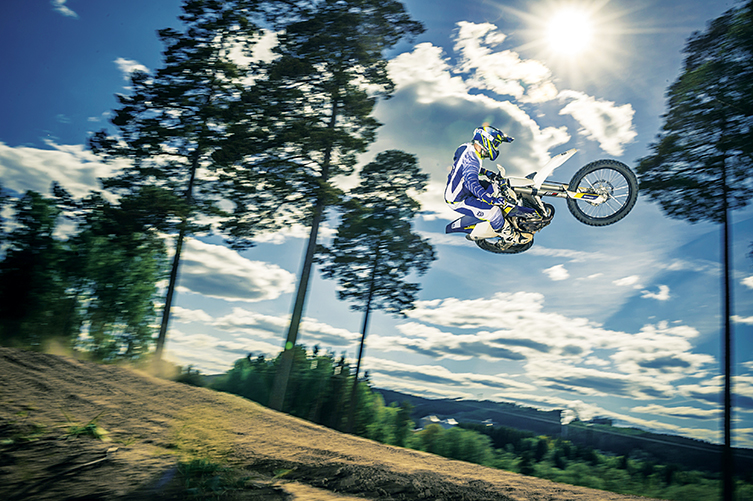
LIGHT, WHITE & UP FOR THE FIGHT
Headlining the sweeping changes to Husqvarna’s 2016 motocross models are all-new engines, a revamped rolling chassis, massive weight reductions, and totally different bodywork and ergos. We cut loose at the Budds Creek world media launch for these new-generation machines to get a fix on how all those updates translate on the track.
Husqvarna staffers around the world are fed-up with their bikes being referred to as “white KTMs”. And given that the brand’s 2016 MX models have all adopted the new-gen engines and frames that were revealed on the 2016 KTMs a couple of months ago, those thinly veiled slurs aren’t going to go away in a hurry. But are these 2016 Huskys really just KTMs in white, blue and yellow clothing? Or have the unique changes to the new models’ bodywork, subframe, cockpit and componentry given them a personality that’s more distinct from their KTM counterparts? And how do these Huskys compare with their 2015-model predecessors?
We got the chance to answer those questions when Husqvarna twisted our arm to fly over and sample the new bikes at the infamous Budds Creek Motocross Park in Maryland, USA.
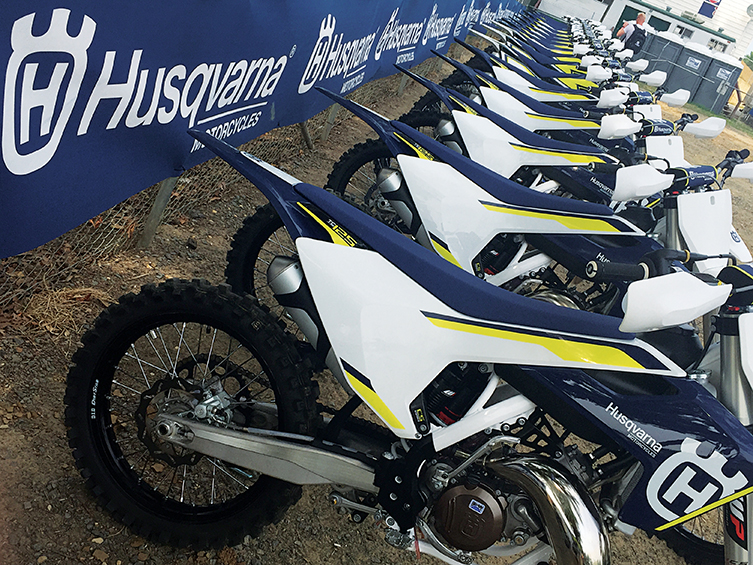
WHITE KTMs?
The 2016 Husqvarnas are worlds apart from their predecessors – in terms of looks, feel, ergos, power and handling character – but let’s address the elephant in the room up front, shall we? The changes to the 2016 Huskys do more than ring a few bells; they create a sense of déjà vu! All-new, super-compact engines with centralised rotating masses; totally new frames with added longitudinal flex and torsional rigidity; a redesigned shock absorber/linkage/swingarm combo; massive weight reductions across the board; revamped ergos and bodywork … yep, that’s all exactly what we heard in KTM’s PR when they released their 2016 year-model MXers two months ago. Similarly, when Husqvarna explained that their 2016 models’ design philosophy was all about “improving performance, comfort and rideability, and reducing weight”, it virtually mirrored the wording KTM used. Sure, it makes total sense that Husqvarna and its Austrian sister company, KTM, take advantage of design and production synergies, but hasn’t Husqvarna been talking about design divergence, not convergence?
It is true that, for 2016, the MX models from Husqvarna continue to run an identical engine and rolling chassis as their 2016-model KTM counterparts. But it’s equally true that the sweeping changes made to these new Husqvarnas’ bodywork, subframe and ergonomics put more distance between the two brands than ever before – both aesthetically and functionally. Like the Katos, the new Huskys get a launch control, bar-mounted dual-map switch, ODI lock-on grips and rubber-mounted bars, but they’re also fitted with some components that the KTMs don’t get. For example, Husky’s new models all get Pro Taper bars for 2016 (as opposed to KTMs’ Nekens), a Magura clutch master cylinder (not Brembo), GSK brake discs, a gripper seat with a completely different profile, and bronze-finish crankcase covers (rather than the dimpled finish the new KTMs run). Plus the Huskys’ reinforced plastic subframe has been completely redesigned and is now constructed from 30% carbon fibre to save 1kg. So the question is: do those differences actually amount to much when you sit on and ride Husqvarna’s new FC and TC models? Let’s climb aboard.
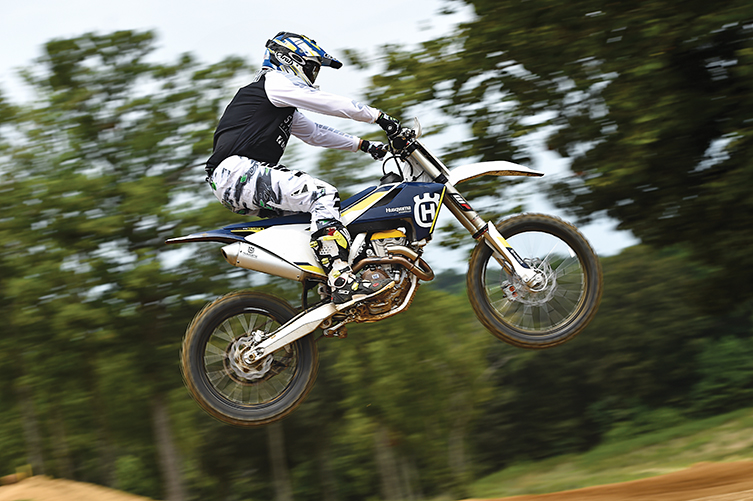
IN THE SADDLE
Compared to its rivals, Husqvarna’s 2015 MX models were all a little broader through the tank and radiator shrouds. They also had a rock-hard seat that perched you over the front of the bike, and a seat cover so slippery you could barely keep your arse planted in one spot. Well, all that has changed for 2016. The new bodywork and slightly smaller 7-litre fuel tank has made the 2016 models’ cockpit noticeably slimmer, while the all-new seat is softer, grippier and a little lower for 2016.
Although there’s been a change to Pro Taper bars across the range, their bend feels very similar to last year’s. Like the new KTMs, the 2016 Huskys’ seat/bars/peg triangle remains largely unchanged from 2015, but it’s all been brought closer to the ground, meaning you can now almost get both feet flat on terra firma while seated in the attack position. The revised rider position will give shorter riders extra control through ruts and in slick conditions, and yet the lower pegs ensure taller guys won’t be cramped for legroom.
Probably the most significant change in the feel you get aboard the new models, though, is created by the all-new, super-streamlined plastics. With seamless, one-piece radiator shrouds and sideplates on both sides, there’s nothing to catch your boots on as you move about the cockpit. And instead of that ‘void’ in the bodywork precisely where your calves want to grab the bike (an issue many complained about with the 2014/15 bikes), the new bodywork lets you grip and control the machine much more effectively with your legs. Also, because the all-new subframe is now secured to the main frame by a single-bolt on each side, not two, there’s no longer that annoying lip to catch your ankles on as you transition from the standing to seated position.
Husqvarna has ticked boxes in the comfort department too. The seat is now softer, broader, grippier and more comfortable. The new rubber-damped bar-mounts absorb vibration and make for a more refined feel through your hands. And by relocating the engine mounts to the side of the new frame for 2016, designers have managed to minimise the transfer of engine vibration to the pegs as well.
We dig the revised shape of the front guard (because it no longer resembles an ice cream container) and the mod look of the stubby rear guard. And the deep-blue colour on the radiator shrouds gives the new bikes a classy feel. Not everyone will be a fan of the big white hand guards, though, and the new bodywork seems to polarise opinion too. For some, the one-piece sideplates and shrouds give it a super-modern look. For others, it creates
an old-school, slab-sided aesthetic (which, of course, can be altered instantly by a fresh set of graphics).
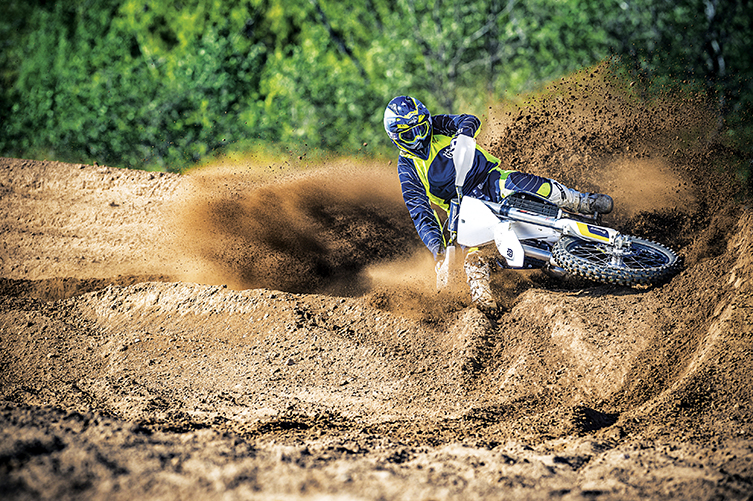
POWER GAINS
Given that these new Huskys run identical powerplants as their KTM counterparts, it’s tempting to simply refer you to what we wrote about the 2016 Katos in our last issue (July-August/#51). But to do that would be to overlook the fact that the four new Husqvarnas’ redesigned airbox has allowed them to made even bigger gains over their predecessors. In broad terms, all the 2015-model Huskys were 1-2 horsepower down on their KTM counterparts because their airbox was smaller and more restrictive. And while Husky’s designers were right in saying this created a smoother and more tractable surge of power, most consumers would prefer to start out with more grunt and throttle response and tame it if needs be. After all, EFI mapping now gives owners a world of tuning options. Plus taking the edge off a bike’s power delivery is generally something that’s confined to the larger-capacity, more powerful models.
So, like the 2016 KTMs, Husky’s 2016 engines all generate more outright power. But more importantly, they also produce noticeably broader, torquier and more usable power. That’s particularly good news for the FC250, which (like the 250SX-F) had slipped behind the rest of the quarter-litre MXers when it comes to torque and throttle response at lower revs. The 2016 FC250 gets into the meat of its power much earlier in the rev range, but gives away nothing through the mid-range and top-end. And even with a 90kg pilot on board, it’s amazing how easily it’ll pull third gear out of turns.
As the FC350 uses the same engine platform, it comes as no surprise that this machine also makes significant gains at lower revs. In fact, of all the new engines, the 350 seems to have taken the biggest step forward in torque and throttle response. Like KTM’s new 350SX-F, its power now feels more akin to a 450 than a 250, meaning you can short-shift and rear wheel-steer the bike if you want. It still revs hard and can be ridden against the rev limiter like a 250, but its broader power means you no longer have to flog it senseless to get results. This much-improved mill will make the FC350 more attractive for riders who don’t have the strength and/or stamina to properly use all the mumbo a 450 has on tap. Our only reservation with the FC350 is its gearing. Admittedly, the 350’s internal gear ratios are a little different, but with a 14/50 final sprocket combo (compared with the 250’s 13/50), the FC350’s gearing does feel on the tall side, and we’d like to try a 51T rear sprocket.
As we discovered with the new 450SX-F, the new engine is a prodigiously powerful specimen, but very user-friendly. It delivers a super-smooth, seamless surge of manageable torque. Whether you’re dialling on the juice in a tight rut or around a fast sweeper, it gets the power to the ground more efficiently than you’d think possible. And if the track conditions (or your physical condition) deteriorate, simply flick the bar-mounted map-switch to the ‘soft’ mode. More so than in the past, the soft map takes the punch out of the power delivery through the bottom and mid, meaning it gives you time to get the bike out of the corner and more upright before you throw all 63 ponies at its crank! And all this from an engine that is, astoundingly, 23mm narrower between clutch and ignition covers than its predecessor.
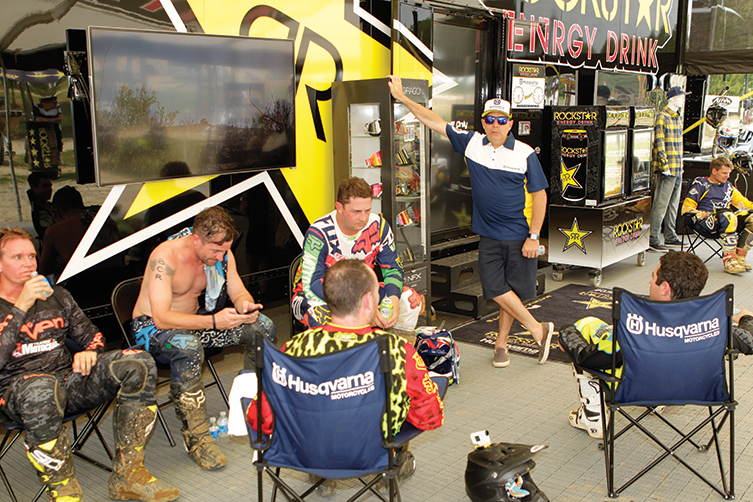
CHASSIS FEEL
While shaving 3-5kg off the new bikes’ weight – and mods such as the steeper steering head and shorter wheelbase – help to improve chassis agility, it’s the overhauled engine configurations that have had the biggest impact on the character of the new Huskys’ ride. By relocating the axis of the crank and clutch shafts (predominantly up on the TC125, and up and back on the three FC models) toward a more central position, the gyroscopic effect of all engines has been reduced drastically for 2016; the result of which is that 2016 machines can be flicked from side to side through chicane-style turns or thrown around in the air with noticeably less rider input. That creates a more neutral and lighter feel to the entire chassis, which lets you ride these models harder for longer without getting worn out.
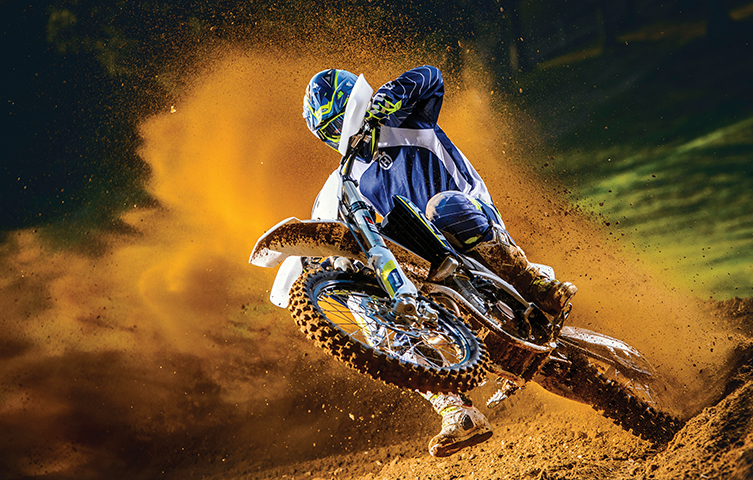
THE HANDLING
With Husqvarna and KTM using an identical frame, suspension settings, linkage and swingarm for 2016, it comes as little surprise that they deliver a similar ride. Thanks to the valving mods designed to improve the damping progression in the 4CS fork, the 2016 fork has a much more supple ride over the smaller bumps and square-edged hits. And as the fork now sits up in its stroke better, the entire chassis is much less inclined to hobbyhorse over a series of braking bumps. The front-end is more confidence-inspiring under brakes, and in the mid-corner it settles nicely, gives you plenty of feedback and lets you carry more corner speed. Even though the 2016 Husqvarnas run identical spring rates and valving to the 2016 KTMs at both ends, the Huskys’ fork seems to have superior bottoming resistance. It’s still a soft set-up in comparison to the Japanese MXers, but it finds the bump-stops less frequently on nasty landings and G-outs compared with the KTMs 2016 range.
As we discovered with the 2016 KTMs, the all-new WP shock absorber performs flawlessly for punters and Pros alike. The new linkage – which is developed to work in harmony with the new frame and shock and revised swingarm – puts less emphasis on the shock’s spring and valving settings. And that creates a more forgiving action across a wider variety of terrain.
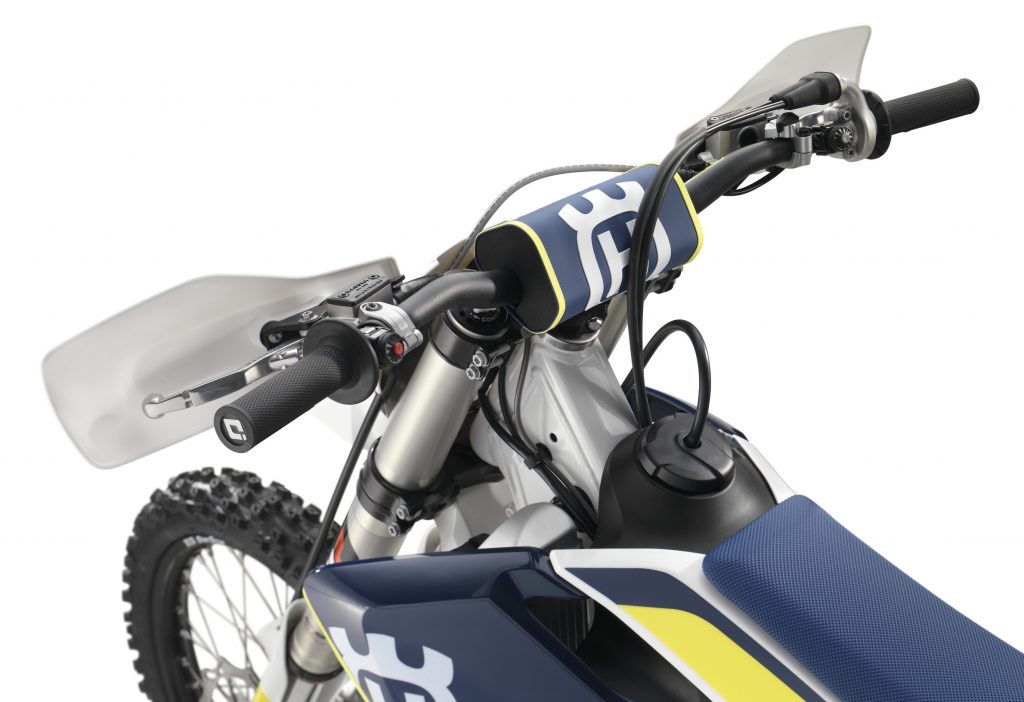
What’s most interesting, though, is that the Husqvarna’s subframe has moved to single fixing bolts where it meets the main perimeter frame for 2016. That makes lot of sense, because Husky’s factory race teams in the USA and Europe have been removing one of these two subframe bolts this season to ensure the super-rigid polyamide subframe didn’t ‘bind up’ the main frame and prevent it from flexing longitudinally the way it’s designed to. And as a result, the new Huskys’ rear-ends make relatively bigger handling gains than the KTMs do. Whether you’re hitting rollers or square-edged bumps, the rear wheel stays in contact with the ground more
often. The bikes track straighter over a series of acceleration bumps and, no matter how big and nasty the braking bumps, their rear-ends remain much more planted and composed.
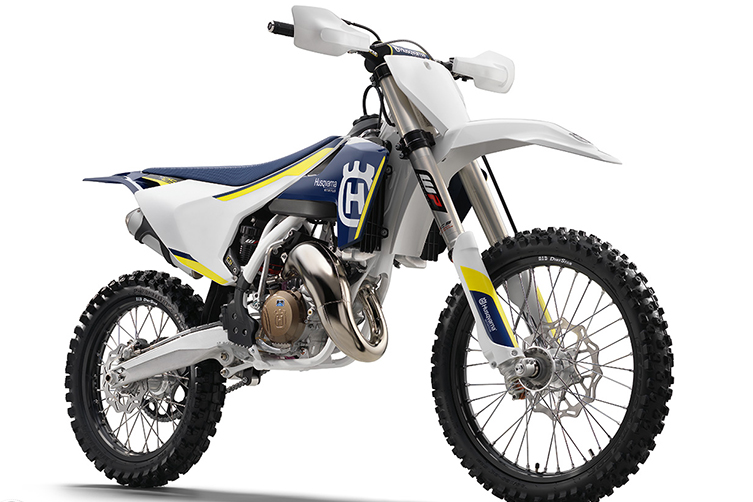
THE TWO-BANGERS
With the sweeping mods to engine, frame and bodywork on the four-strokes, it would have been understandable if Husky’s two-strokes only saw refinement this year. In fact, that’s exactly what happened with the TC250. It gets the rubber-mounted Pro Taper bars, updated suspension settings and new graphics, but its engine, frame, shock and bodywork are all unchanged. In other words, it’s a bit of a hybrid of the old- and new-generation machines.
But the TC125 sure wasn’t overlooked in the update department. Despite the fact the TC125 (and its KTM equivalent) are the clear standouts in the 125cc class, the 2016 TC125 receives a ground-up rebuild. The all-new engine delivers really big improvements through the bottom and mid, without giving away any top end power (who would have thought a 17.3kg engine could pump out 40hp?). Meanwhile, this flyweight machine benefits even more than the four-strokes from the forgiving nature of the new frame and revised fork settings.
IN THE DETAIL
Here are the small but mention-worthy things about the new bikes that attracted our attention at the media launch:
ENGINE
- Replacing the conventional linkage pulley system in the throttle body with a simpler, lighter and more compact design (where the throttle cables are connected directly to the butterfly pulley) has made the throttle action lighter and more precise. Thankfully, the throttle cable adjusters have been relocated from under the fuel tank (where they were previously awkward to get at) up to the throttle housing on the bars.
- There’s noticeably less engine vibration felt through the handlebars, footpegs and frame – on both the two- and four-stroke models.
- The new Samsung Lithium-Ion batteries were 100% reliable at the launch.
ERGOS
- The radiator shrouds and sideplates are now one-piece units. To access the air filter, you simply snap the sideplates’ three lugs out of their rubber grommets, and slide the whole plastic panel forward (and off the two locating tabs on the tank).
- The new seat is held in place by two underside locating tabs. A single bolt (positioned behind the LHS sideplate) then stops it from sliding backwards. This set-up is way better than last year’s, where the two seat bolts sat inside the grab-handles and were fiddly to access.
- To minimise the risk of the rubber-mounted bars from twisting in a crash, the lower bar mounts have been combined into a one-piece bridged unit.
- The lock-on ODI grips are very practical as they’re easy to fit and remove, and can be replaced in no time flat if they’re damaged.
- The front brakeline now runs through a bracket mounted behind the front plate. This set-up protects the brakeline better and stops it from scratching the plastic.
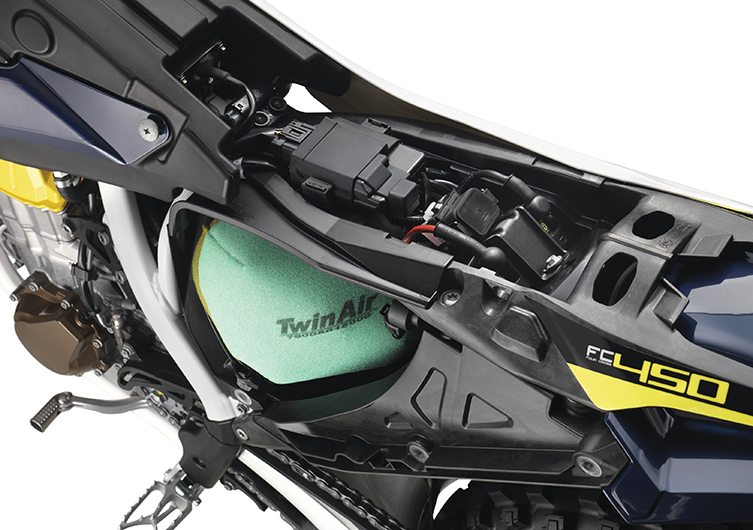
ACCESSORIES
- The redesigned airbox and air filter fastening system make it even quicker and easier to replace because there’s virtually no way you can get the filter positioning wrong.
- The new radiators (made from a revised alloy) are not only stronger and improve cooling efficiency by a claimed 10%, but the new filler cap also gets a redesigned neck that makes filling easier.
- The wiring harness has been designed so that the rear subframe can be removed without having to unplug any wiring. Smart! Compared to the 2015 models, the revised wiring is visibly simpler and neater.
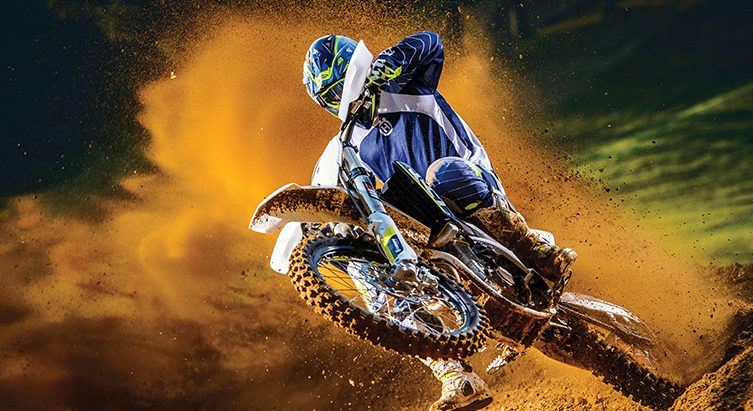
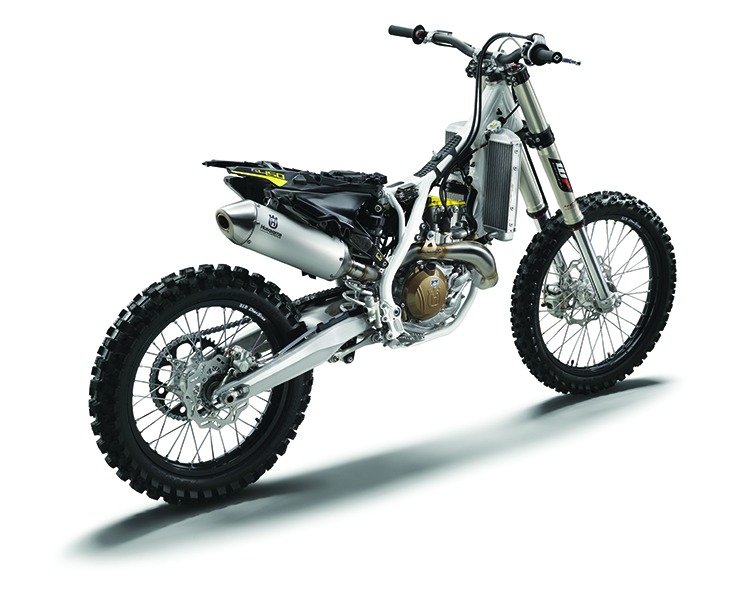







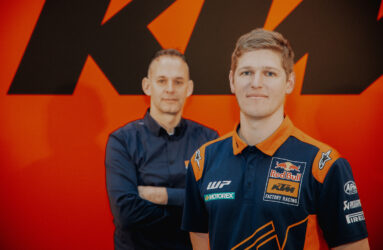
Be the first to comment...